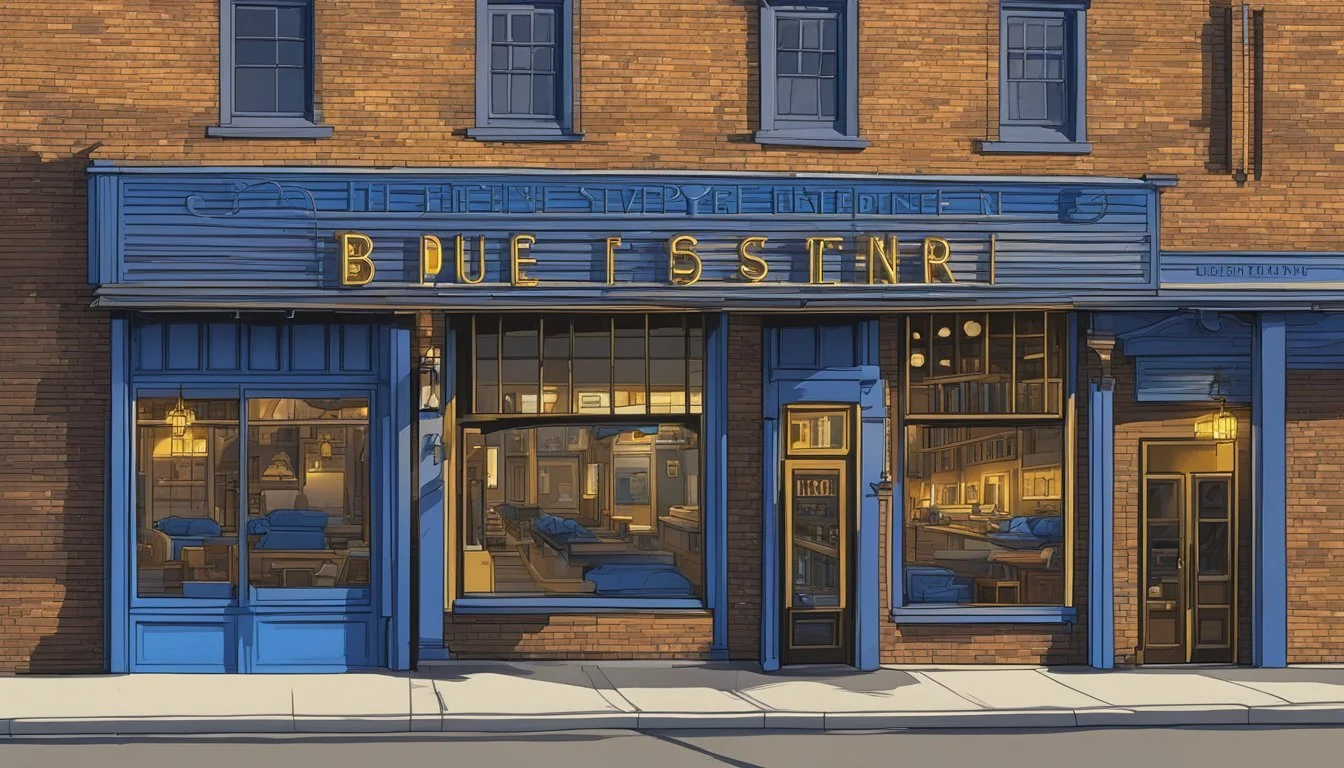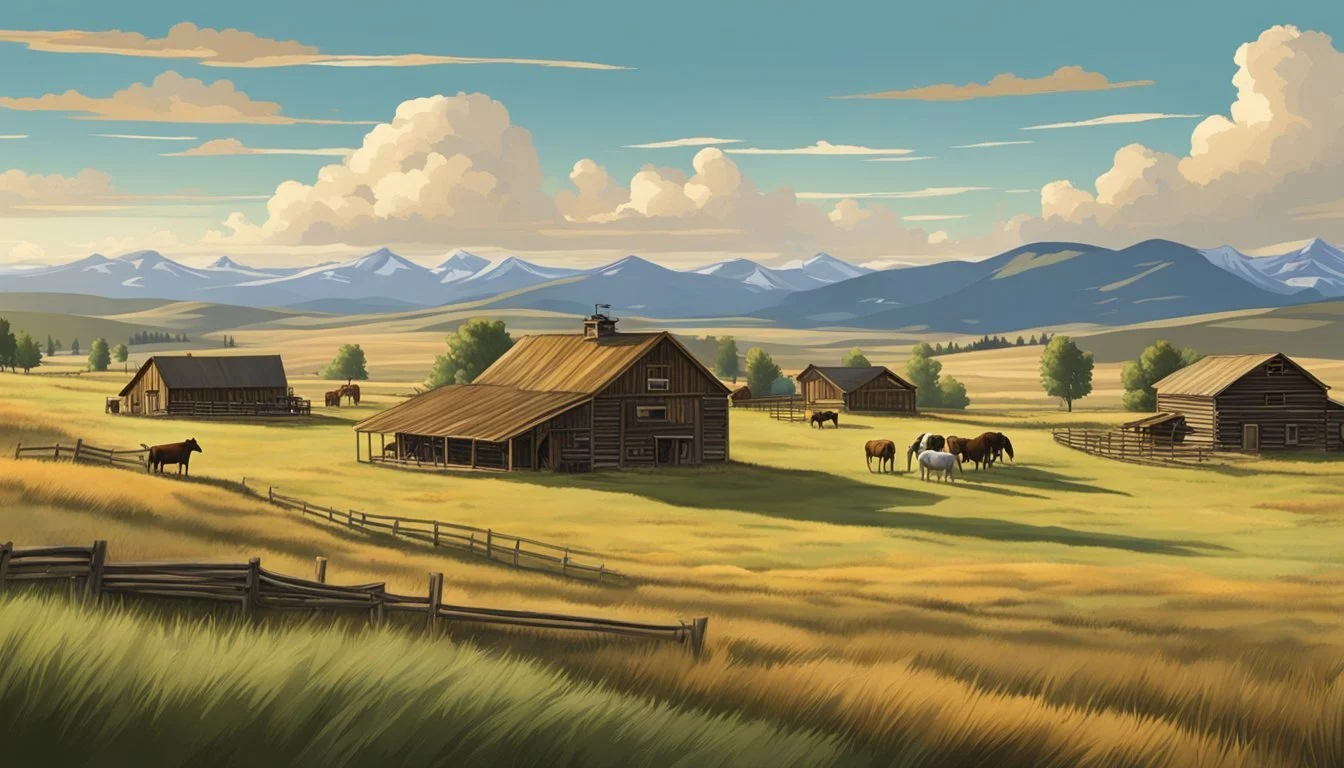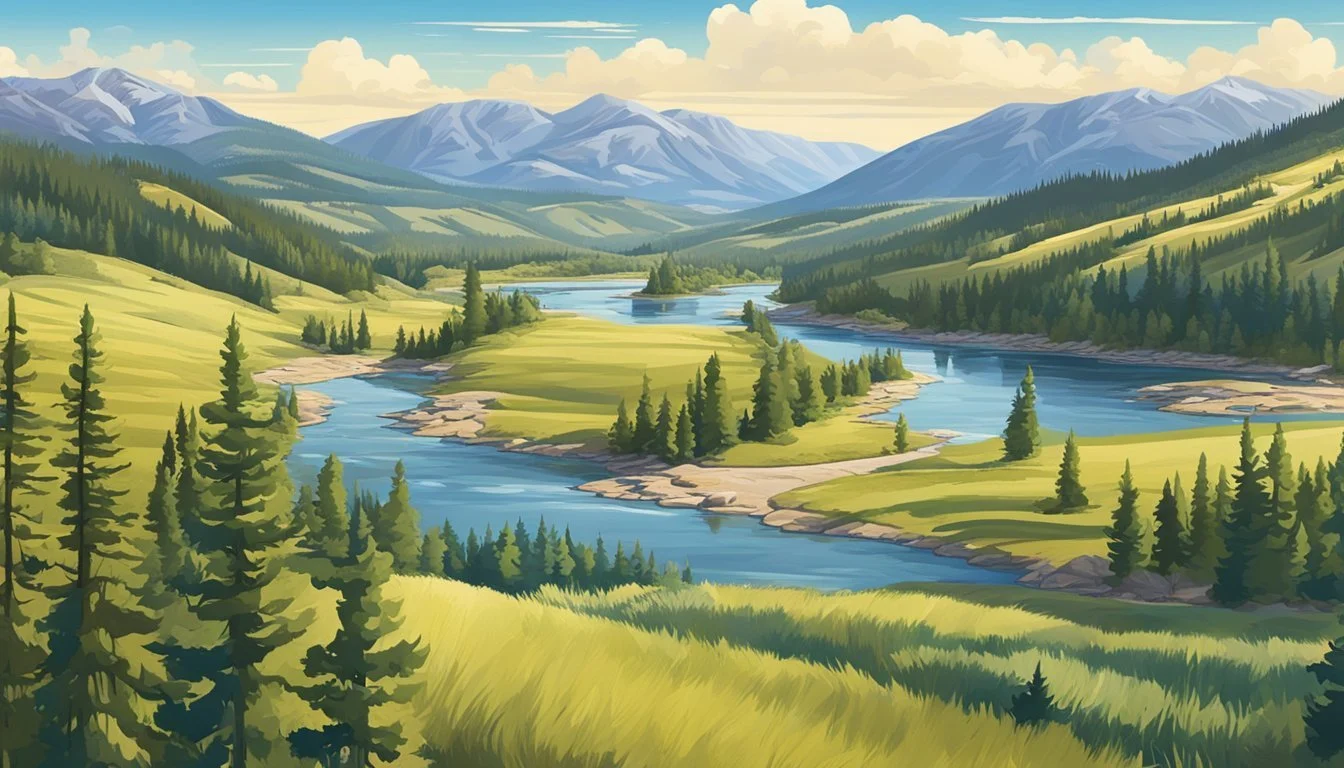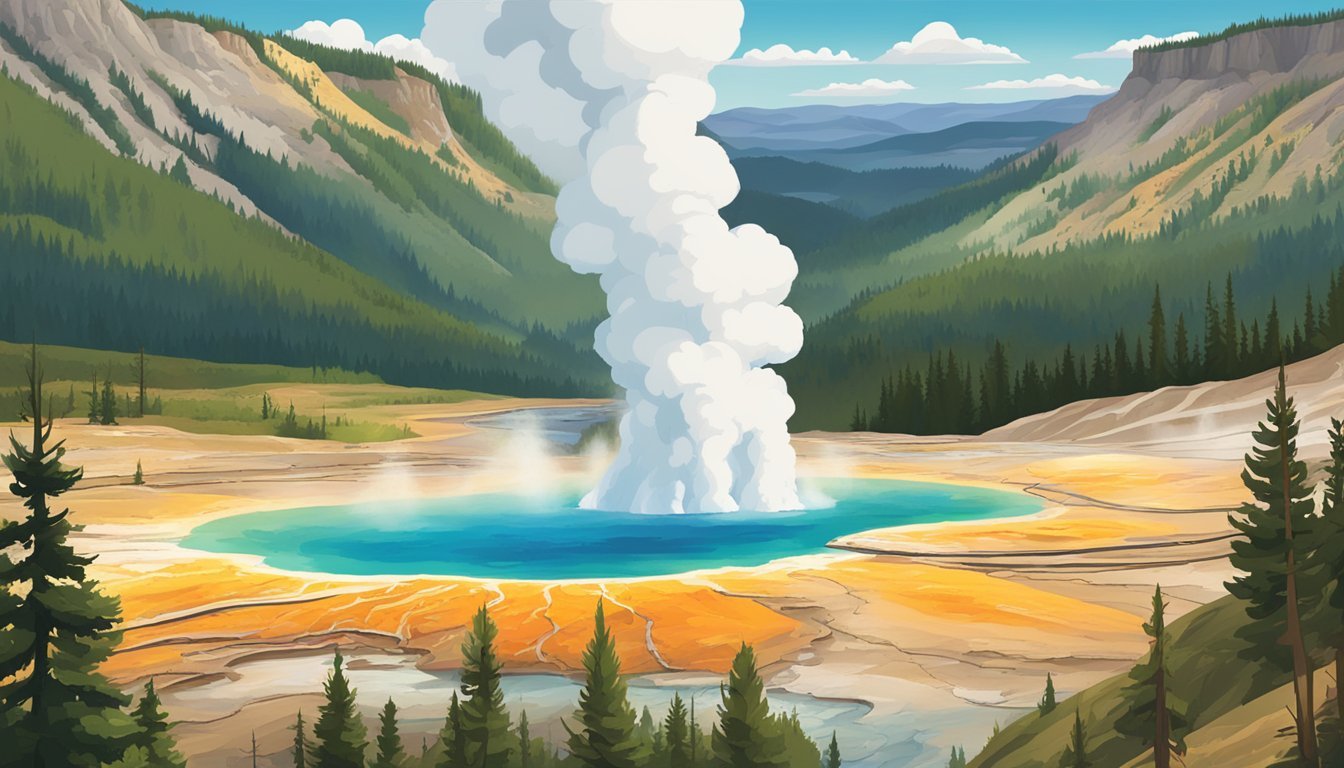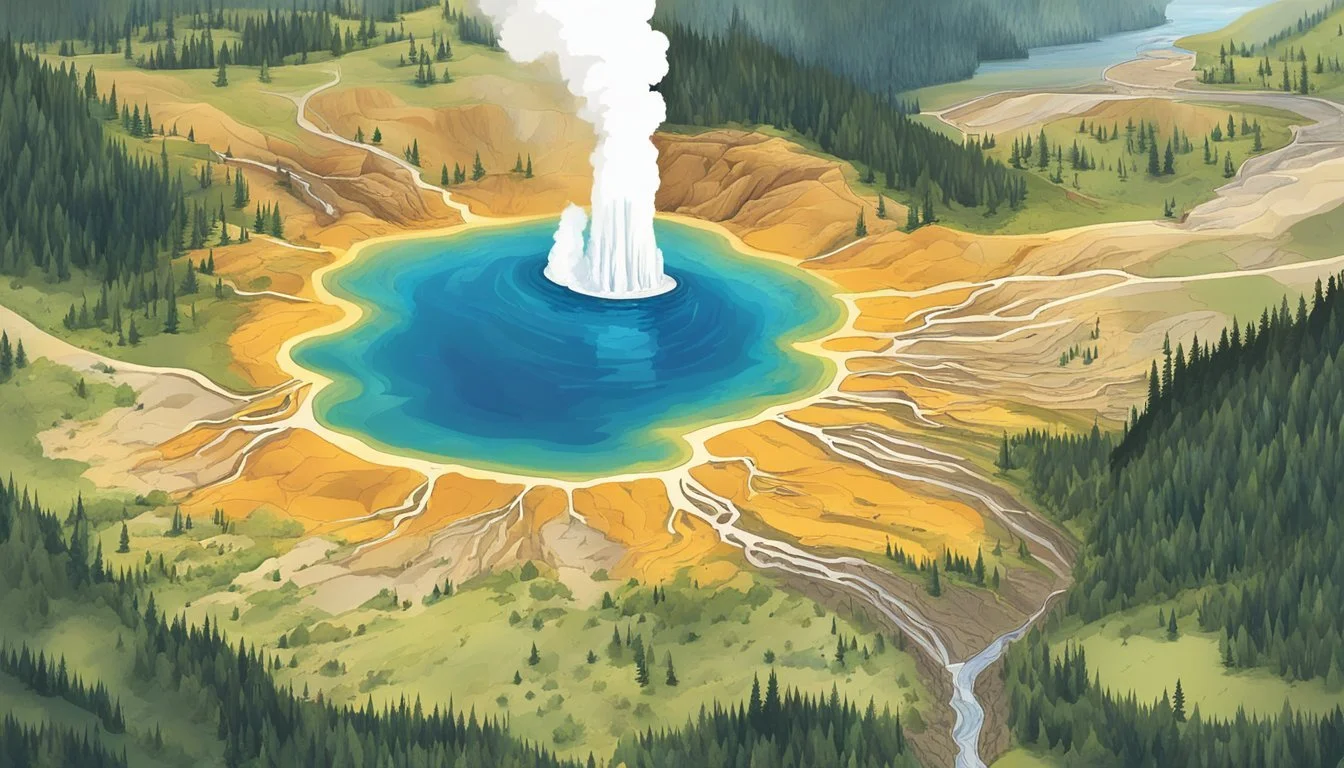12 Real-Life Locations Featured in Yellowstone
Must-Visit Spots for Fans of the Hit TV Series
Yellowstone, the hit Western drama series, has captivated audiences with its gripping storylines and stunning visuals since 2018. The show's picturesque settings play a crucial role in bringing the Dutton family saga to life, transporting viewers to the rugged landscapes of Montana and beyond.
While the series is set in Montana's Paradise Valley, many scenes are actually filmed across various locations in Montana, Utah, and Texas. These real-life settings provide the breathtaking backdrops that have become synonymous with the show's aesthetic. From sprawling ranches to majestic mountain ranges, the filming locations of Yellowstone offer fans a chance to experience the beauty of the American West firsthand.
1) Dutton Ranch, Montana
The iconic Dutton Ranch from Yellowstone is a real place, though it goes by a different name. In reality, it's the Chief Joseph Ranch, located in Darby, Montana.
This sprawling 2,500-acre property serves as a working cattle ranch, just like its fictional counterpart. The ranch sits in the picturesque Bitterroot River Valley, offering stunning views of the surrounding landscape.
Visitors to the area can actually see the ranch up close. The Yellowstone signs remain in place year-round, adding to the authenticity of the experience for fans of the show.
The Chief Joseph Ranch's use as the Dutton family home in Yellowstone has brought it significant attention. Its rugged beauty and expansive grounds make it an ideal backdrop for the dramatic series.
While the Dutton family may be fictional, their ranch draws inspiration from real Montana ranches and the rich history of the American West. This blend of fact and fiction adds depth to the show's portrayal of modern ranch life.
2) Chief Joseph Scenic Byway, Wyoming
The Chief Joseph Scenic Byway, also known as Wyoming Highway 296, is a stunning route that connects Cody with Yellowstone National Park. This picturesque drive winds through the Shoshone National Forest and Absaroka Mountains.
Named after the leader of the Nez Perce Tribe, the byway commemorates Chief Joseph's historic 1,170-mile retreat in 1877. He led his people through this area while attempting to escape the U.S. Cavalry, who were forcing the tribe onto a reservation.
The byway offers breathtaking views of Wyoming's rugged landscape. Travelers can expect to see diverse wildlife and enjoy access to various recreational opportunities along the way.
This scenic route serves as a gateway to Yellowstone Country, linking with the Beartooth Highway and the park's northeast entrance. It provides a unique blend of natural beauty and cultural significance.
Visitors driving the Chief Joseph Scenic Byway can experience the same terrain where this legendary historical event unfolded. The journey offers a chance to connect with both the dramatic scenery and the rich history of the American West.
3) Old Faithful, Yellowstone National Park
Old Faithful stands as one of the most iconic attractions in Yellowstone National Park. This cone geyser, located in Wyoming, has captivated visitors for generations with its regular eruptions.
Named in 1870 during the Washburn-Langford-Doane Expedition, Old Faithful was the first geyser in the park to receive a name. Its predictability has made it a must-see destination for tourists from around the world.
Since 2000, Old Faithful has erupted every 44 minutes to two hours. This consistent schedule allows visitors to plan their viewing experiences with relative ease.
The geyser and its surrounding area serve as a dramatic backdrop in the television series "Yellowstone." While the show primarily films in Montana, Old Faithful represents the raw natural power that defines the American West.
Yellowstone National Park's geothermal features, including Old Faithful, showcase the region's unique geological characteristics. These elements contribute to the park's status as a symbol of wilderness conservation.
Visitors to Old Faithful can also explore the nearby Old Faithful Inn, a historic landmark that complements the natural wonders of the area.
4) Lamar Valley, Yellowstone National Park
Lamar Valley is a stunning location in Yellowstone National Park, often referred to as America's Serengeti. This expansive grassland is situated in the northeastern corner of the park, offering visitors breathtaking views and unparalleled wildlife viewing opportunities.
The valley is renowned for its diverse ecosystem, supporting a wide range of animal species. Visitors can spot herds of bison grazing on the lush meadows, as well as elk, pronghorn, and bighorn sheep.
Lamar Valley is particularly famous for its wolf population. Since the reintroduction of wolves to Yellowstone in the 1990s, this area has become one of the best places in the world to observe these elusive predators in their natural habitat.
The valley's remote location, approximately a 90-minute drive from Old Faithful, ensures a less crowded experience compared to other popular park attractions. This isolation contributes to its pristine beauty and abundant wildlife.
Scenic drives through Lamar Valley offer spectacular views of the surrounding mountains and winding rivers. Early morning and late afternoon are ideal times for wildlife watching, as animals are most active during these periods.
5) Beartooth Highway, Montana/Wyoming
The Beartooth Highway is a stunning 68-mile stretch of U.S. Route 212 that connects Red Lodge, Montana, to the Northeast entrance of Yellowstone National Park. This scenic byway traverses the rugged Beartooth Mountains, offering breathtaking views of the surrounding wilderness.
Opened in 1936, the highway reaches an impressive elevation of 10,947 feet at Beartooth Pass, making it one of the highest roads in the continental United States. The road winds through the Gallatin, Shoshone, and Custer National Forests, showcasing the natural beauty of the Greater Yellowstone Ecosystem.
Typically open from late May to mid-October, the Beartooth Highway provides access to some of the most spectacular landscapes in the region. Visitors can expect to encounter dramatic switchbacks, alpine lakes, and sweeping vistas of snow-capped peaks.
The highway's exceptional beauty and engineering feat have earned it the designation of an All-American Road. It has been praised by many, including the late CBS News correspondent Charles Kuralt, who called it "the most beautiful drive in America."
6) Livingston, Montana
Livingston, Montana plays a significant role in the Yellowstone series, serving as a backdrop for several key scenes. This picturesque town, located in Park County, offers a genuine slice of Montana life.
The show features Livingston's downtown area, showcasing its historic buildings and charming streets. Viewers can spot local landmarks like the Murray Hotel, which adds authenticity to the show's setting.
Livingston's Livestock Association Field Office, depicted in Yellowstone, is actually a building at the corner of Railroad Street and Woody Street in Missoula. This location serves as a meeting point for characters and a site of dramatic confrontations.
The surrounding landscape of Livingston, with its stunning mountain views and expansive prairies, provides a breathtaking backdrop for many outdoor scenes. These vistas capture the essence of Montana's natural beauty.
While some Livingston scenes are filmed on location, others are recreated on sets or in nearby areas. This blend of real and fictional elements helps create the immersive world of Yellowstone.
7) Paradise Valley, Montana
Paradise Valley is a stunning location featured prominently in the Yellowstone TV series. Situated north of Yellowstone National Park, this picturesque valley stretches along the Yellowstone River.
The valley offers breathtaking views of towering mountains and rolling meadows. Its natural beauty serves as a perfect backdrop for various ranch scenes in the show.
Paradise Valley is nestled between the Absaroka and Gallatin mountain ranges, creating a dramatic and scenic landscape. The area's diverse terrain includes open grasslands, rugged peaks, and winding rivers.
In Yellowstone, Paradise Valley represents the quintessential Montana wilderness. It embodies the untamed spirit of the American West that is central to the show's themes.
The valley's inclusion in the series has increased its real-world popularity. Fans of Yellowstone now visit Paradise Valley to experience the landscapes they've seen on screen.
8) Gallatin Canyon, Montana
Gallatin Canyon in Montana serves as a stunning backdrop for several scenes in Yellowstone. This picturesque gorge is carved by the Gallatin River, offering viewers breathtaking vistas of rugged cliffs and pristine wilderness.
The canyon's natural beauty perfectly complements the show's themes of untamed landscapes and the struggle between preservation and development. Its winding roads and remote stretches provide ideal settings for dramatic chase scenes and tense encounters.
Yellowstone's creators chose Gallatin Canyon for its authentic Montana feel and diverse terrain. The area's mix of forests, rivers, and rocky outcrops allows for versatile filming opportunities, representing different parts of the Dutton ranch and surrounding territories.
Visitors to Gallatin Canyon can experience the same awe-inspiring views seen in the series. The location offers outdoor activities like hiking, fishing, and whitewater rafting, allowing fans to immerse themselves in the world of Yellowstone.
While some scenes are filmed on-site, others may use Gallatin Canyon as inspiration for similar-looking locations. This blend of real and inspired settings contributes to the show's authentic portrayal of Montana's rugged landscape.
9) Ennis, Montana
Ennis, Montana serves as a backdrop for several scenes in the Yellowstone TV series. This small town in Madison County offers picturesque views of the Madison River and surrounding mountains.
In the show, Ennis is portrayed as a quaint Western community where characters occasionally visit. The town's authentic Main Street and local businesses lend authenticity to the series' depiction of rural Montana life.
Fishing enthusiasts may recognize Ennis as a prime location for fly fishing, a activity sometimes featured in Yellowstone. The town's proximity to Yellowstone National Park also makes it a logical setting for storylines involving the park's influence on local communities.
While not as prominently featured as some other locations, Ennis adds depth to the show's portrayal of Montana's diverse landscapes and lifestyles. Its inclusion helps create a more comprehensive and realistic depiction of the region where the Dutton family's saga unfolds.
10) Forrie J. Smith's Bar N Ranch, Montana
Forrie J. Smith, known for his role as Lloyd on the hit TV series Yellowstone, owns a real-life ranch in Montana. The Bar N Ranch reflects Smith's authentic cowboy background and serves as a testament to his deep connection to ranch life.
Located in Montana, the Bar N Ranch showcases the rugged beauty of the state's landscape. Smith grew up surrounded by ranch culture, with his grandfather participating in rodeo circuits and his mother competing as a barrel racer.
Smith's ranch allows him to maintain his cowboy lifestyle off-screen. The property likely features expansive pastures, horse stables, and other typical ranch facilities. It provides a genuine setting for Smith to practice his horsemanship skills, which he's honed since childhood.
The Bar N Ranch stands as a prime example of the real-world ranches that inspire the fictional settings in Yellowstone. Smith's ownership of this working ranch adds credibility to his portrayal of Lloyd, bringing an extra layer of authenticity to the show.
11) Big Timber, Montana
Big Timber, Montana serves as a captivating filming location for the hit series Yellowstone. This charming small town, nestled in Sweet Grass County, offers a genuine glimpse into rural Montana life.
The picturesque main street of Big Timber has been featured in several episodes, showcasing its classic Western architecture and local businesses. The town's authentic atmosphere provides a perfect backdrop for scenes depicting the everyday lives of Montana residents.
Surrounding Big Timber, the stunning landscapes of rolling plains and distant mountains contribute to the show's visual appeal. These natural settings are often used for wide shots that capture the essence of Montana's vast open spaces.
The Boulder River, which flows near Big Timber, has also been utilized in Yellowstone's filming. Its pristine waters and rocky banks create an ideal setting for outdoor scenes and dramatic confrontations.
Big Timber's inclusion in Yellowstone has brought increased attention to this quaint Montana town. Fans of the show can visit and experience the genuine Western ambiance that makes it such a compelling filming location.
12) Ruby Valley, Montana
Ruby Valley in Montana serves as a picturesque backdrop for several scenes in Yellowstone. This stunning location showcases the rugged beauty of the American West that the show is known for.
The valley is nestled between the Tobacco Root Mountains and the Ruby Range, offering breathtaking views of rolling hills and expansive grasslands. Its natural splendor provides an authentic setting for the show's outdoor sequences.
Ruby Valley is home to working ranches and small communities, reflecting the rural lifestyle depicted in Yellowstone. The area's wide-open spaces and big sky perfectly capture the essence of Montana's landscape.
Viewers might recognize Ruby Valley in scenes featuring cattle drives or characters on horseback traversing the countryside. Its inclusion in the show helps create a genuine representation of life in the modern American West.
While not as frequently featured as some other locations, Ruby Valley adds depth and authenticity to Yellowstone's visual storytelling. Its natural beauty contributes to the show's immersive portrayal of Montana's diverse landscapes.
Cinematic Appeal of Yellowstone's Real-Life Locations
Yellowstone's stunning landscapes and authentic settings have captivated viewers and sparked interest in the show's filming locations. The series showcases Montana's natural beauty while boosting tourism to featured areas.
Impact on Tourism
Yellowstone's popularity has significantly increased tourism in Montana. Fans eagerly visit real-life locations from the show to experience the breathtaking scenery firsthand. The Chief Joseph Ranch in Darby, Montana, which serves as the Dutton family ranch, has become a major attraction.
Visitors flock to iconic spots featured in the series, hoping to immerse themselves in the rugged beauty of Big Sky country. This influx of tourists has boosted local economies and raised awareness of Montana's natural wonders.
The show's success has put lesser-known locations on the map, encouraging viewers to explore beyond traditional tourist destinations.
Authenticity in Filmmaking
Yellowstone's use of real locations adds a layer of authenticity to the series. By filming in Montana, Utah, and Texas, the show captures the diverse landscapes of the American West.
The panoramic vistas and untamed wilderness serve as more than just backdrops - they become characters in their own right. This commitment to showcasing real environments enhances the storytelling and immerses viewers in the world of the Dutton family.
Filmmakers carefully select locations that reflect the show's themes of land ownership, natural beauty, and the challenges of modern ranching. This attention to detail creates a visual experience that resonates with audiences and brings the story to life.
The Geography of Filming
Montana's diverse landscapes provide the stunning backdrop for Yellowstone's cinematography. The show's filming locations showcase sweeping vistas, rugged mountains, and pristine wilderness that capture the essence of the American West.
Key Features of Filming Sites
The Chief Joseph Ranch in Darby, Montana serves as the iconic Dutton family ranch. This 2,500-acre working cattle ranch offers panoramic views of the Bitterroot Valley and surrounding mountains. Nearby, the Bitterroot River and lush forests create a picturesque setting for outdoor scenes.
Other key filming locations include:
Paradise Valley: Rolling hills and grasslands
Glacier National Park: Dramatic peaks and alpine meadows
Yellowstone National Park: Geothermal features and wildlife habitats
These sites provide a mix of open range, forested areas, and mountainous terrain essential for portraying the show's Western setting.
Landscape and Setting
Yellowstone's filming locations highlight Montana's geographical diversity. The state's varying elevations create distinct ecosystems, from high mountain ranges to expansive prairies. This variety allows the show to depict different aspects of ranch life and wilderness adventures.
Key landscape elements include:
Rugged mountain ranges
Wide-open grasslands
Pristine rivers and lakes
Dense coniferous forests
These natural features form an integral part of the show's visual narrative. The changing seasons also play a role, with snow-capped peaks and autumn colors adding depth to the scenery. The vast, open spaces convey a sense of freedom and possibility central to the Western genre.



